This is part of my series of posts on Baldur’s Gate 3. If you’re reading this post without reading the others:
- I will try to avoid spoilers, but inevitably there will be some. In particular, any links to information on the BG3 wiki or YouTube videos should be regarded as spoiler-laden.
- I’m not a particularly skilled player. Don’t expect tips for soloing Honor mode.
- There will be too many screenshots.
- After two posts in which I went over BG3/D&D5e in excruciating detail, I’m going to ease up a bit. However, I will continue my custom of analyzing one aspect of the system. In my last post it was the “action economy”; in this post it will be “Rests.”
At the end of my post on playthrough 7, I stated my playthrough 8 goals:
- Character goals:
- Wyll, the last of the Origin characters that I had not yet played, with 12 levels of Fiend Warlock. This is his implied build within the BG3 story.
- Shadowheart as a Trickery Cleric. This is class assigned to her at the start of the game.
- Karlach as an Open-Hand Monk, to follow up on a claim that she’s the best one to play that class.
- Lae’zel or Minthara: Sorcadin = part Paladin, part Sorcerer.
- Relationship goal: Karlach.
- Auxiliary goal: See if I can make a Druid work.
Let’s see if I learned anything.

We’ll learn who this is, and why she’s special.

This was an unusual playthrough for me, on several levels. Are you ready to explore it with me?

Wyll
As an Origin character, Wyll has been the one I found to be the least engaging.
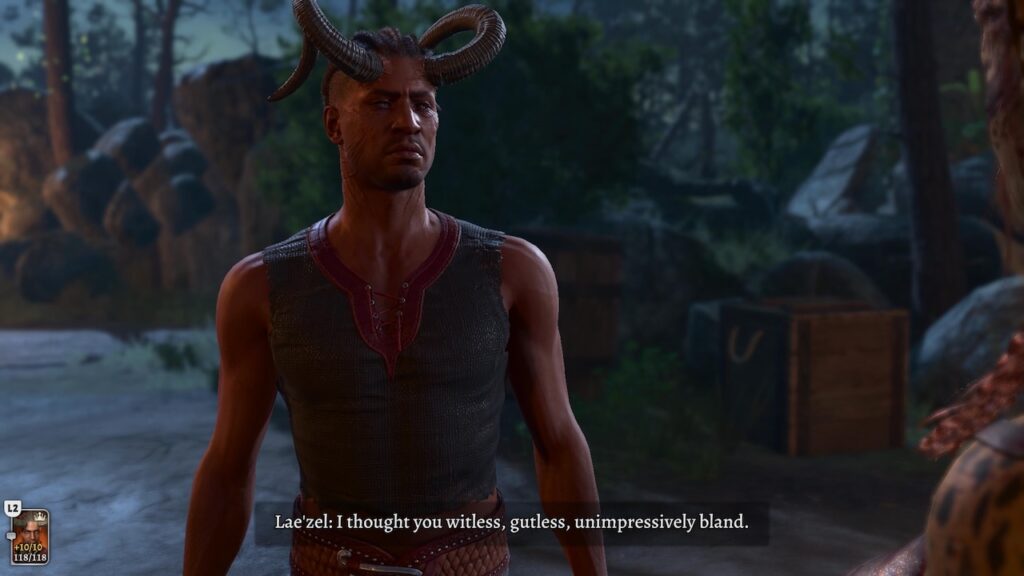
I’m not alone in this. It’s my understanding that during the development of the game, Larian Studios had to rewrite his story. They hired a second voice actor, Theo Solomon, to completely re-voice the character because the first voice actor, Lanre Malaolu, was no longer available for the work.
For me, the version of Wyll that I experienced in previous playthroughs was… fine. It was just not as deep as the story I experienced with the other characters.
My issue is that Wyll didn’t really have meaningful choices. He’s introduced in the game as a defender of the weak and an enemy of evil. So every “choice” that the game presents for him after that is obvious. You can make Wyll vile and treacherous if you want, but from any kind of story perspective it doesn’t make sense. It would be as unbelievable as having Robin Hood kill Richard I and making himself King of England.

That’s why I left Wyll as the last Origin character to play.
Now that I’ve done it, I’ll acknowledge that it’s better to play as Wyll than to control him while playing some other character. In fact, were I introducing someone to BG3, I’d suggest they play him first. Warlocks aren’t hard to play (just keep casting Eldritch Blast) and you get a good feel for the kinds of story choices the game presents. Since Warlocks have high Charisma, they also make a good “face of the party,” a comfortable role for a new player.
As with the other Origin characters, playing as Wyll presents you with some scenes unique to him.
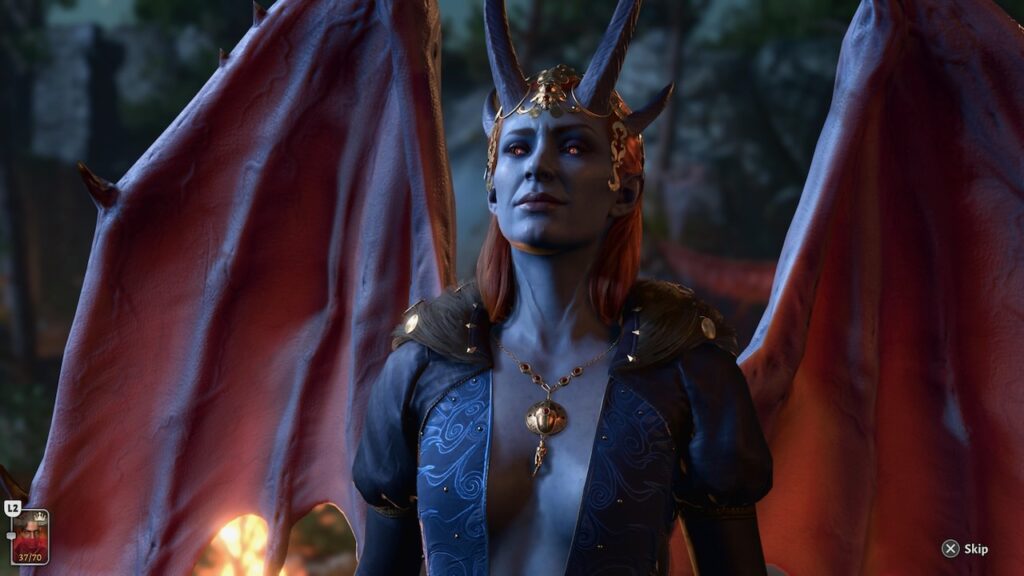

As for playing him through 12 levels of Fiend Warlock: nothing special. While he cast some Fireballs from time to time, his bread-and-butter spell was Eldritch Blast. But if you’re going to rely on Eldritch Blast, there are better builds out there. Were I to play him again, I think I’d use this one:
I have his gear load-out at the bottom of this post. That’s where I’ll explain why he chose the Warlock’s Pact of the Blade.

With that said, Wyll turned out to be quite the player. Yes, he had a relationship with Karlach:

There were other connections as well. He got lots of hugs:
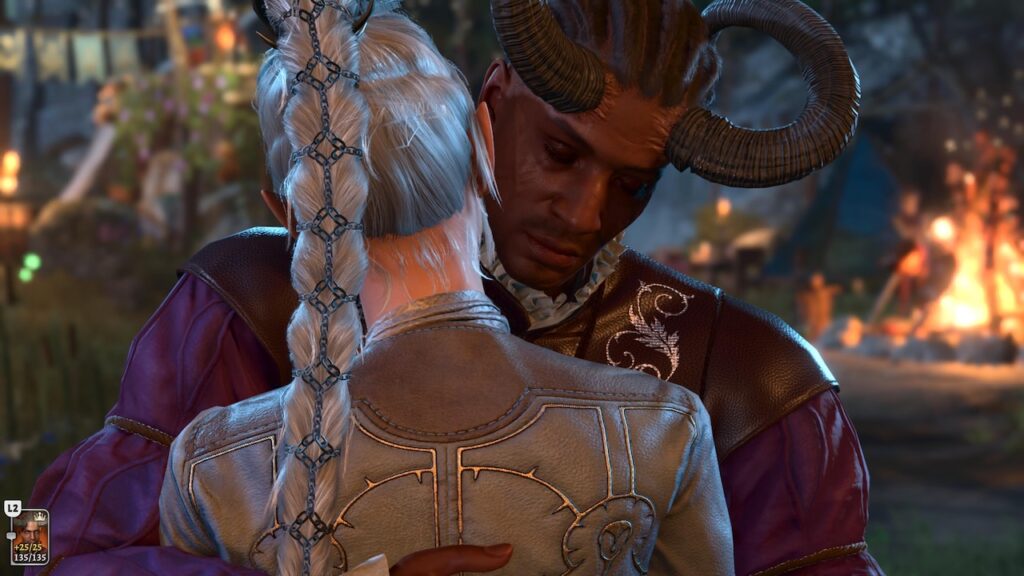
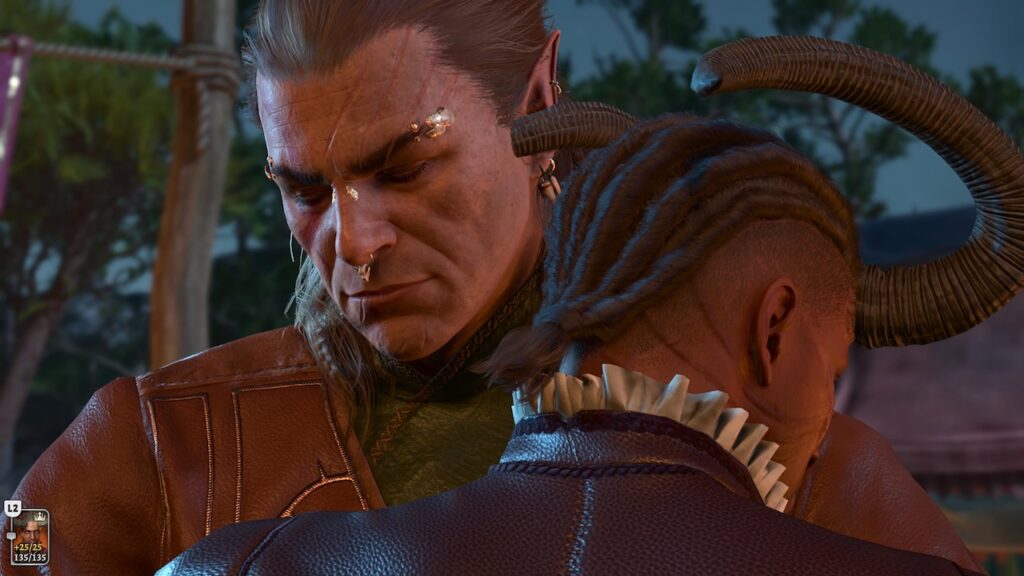
He even had his own team of minions:

Would I play as Wyll again? Probably not, mainly because playing as a different character and having Wyll in your party is almost the same as playing him directly. But I’m glad I tried it. If the goal of the game is entertainment, consider me entertained.
Shadowheart
Goal: Playing Shadowheart as a Trickery Cleric.
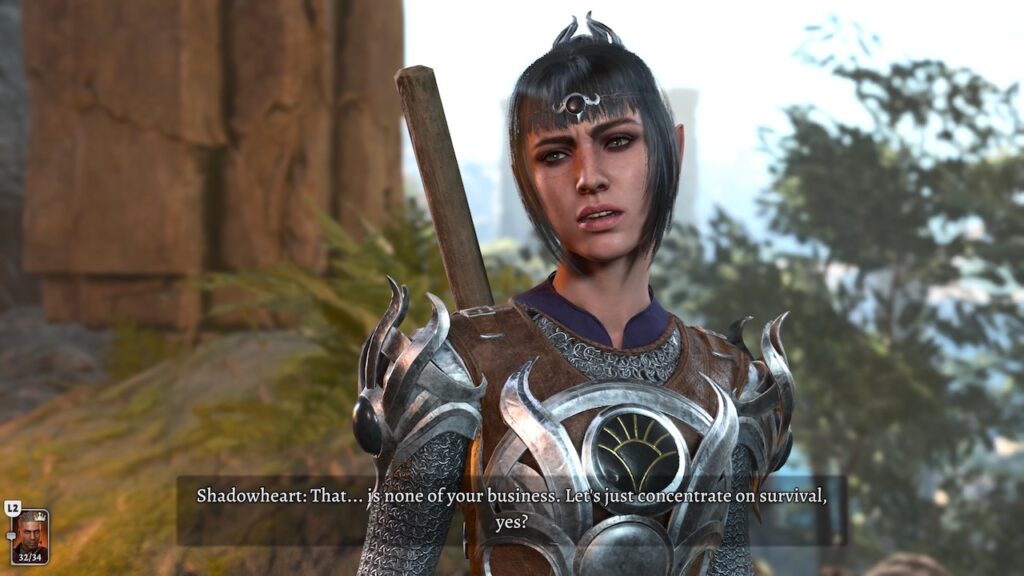
This was a fail.
I’m not surprised. The Trickery Domain subclass of Cleric is considered to be among the worst in BG3. Larian probably put Shadowheart in that Domain for story reasons, but for any reasonable gameplay it’s a selection she should be be respecced out of.
Trickery Clerics may have their place in tabletop D&D5e, though I’ve never seen them in the few games I’ve played. In BG3, they don’t bring anything special except for being generic Clerics.
I tried to make Trickery Shadowheart fulfill the “Rogue” role in the party: archery combat, picking locks, disarming traps. She couldn’t do any better at those tasks than any other character with high Dexterity. Trickery Clerics can support others in the role of Rogue, but they don’t make great Rogues in and of themselves.
Shadowheart’s days in the party came to an end when I realized that Karlach, as an Open-Hand Monk, had superior Rogue-like skills than anything that Shadowheart could do.

The next time I decide to use Shadowheart in a party, I think I’ll try this Cleric Ranger build and see how well that works.
In general, in BG3 the main value that Clerics bring to the game is not their ability to heal, but their role in combat. The Tempest, War, and Light Domains are best for combat prowess. It’s not unusual for multi-class build guides to include at least one Cleric level in one of those Domains.
Why don’t we need them as healers? To explain that, it’s time for another rules tangent:
Short and Long Rests
If you’re already familiar with this concept, scroll down until you start to see pictures again.
To a large extent, tabletop role-playing games are about resource management: hit points, magic spells, etc. At some point during the game, there’s usually an opportunity to reset one’s resources to full.
In D&D5e, that opportunity is called a “Rest.” There are two kinds: Short and Long. During a Short Rest, there’s partial recovery of some resources (e.g., hit points) and full recovery of others (Warlock spells, a Monk’s Ki points). After a Long Rest, the resources are fully restored. (I may be a bit off here; in BG3 resources are fully restored, but that might not always be the case in D&D5e.)
Canonically, a Short Rest takes an hour; a Long rest takes takes eight hours. What that’s meant in the D&D games I’ve seen is that the ability to Rest is dependent on how the GM chooses to run their campaign. Some GMs might simply accept “We’re resting now”; some may roll for random monster attacks during a Rest and declare that the Rest has failed if it’s interrupted; some may make it depend on the situation.
In BG3, a Short Rest takes no time at all, and can be done anywhere. You click the button that for “Short Rest,” you see a graphic effect, and it’s done. You’re limited to two Short Rests per day (three if you’ve got a Bard in your party).
The typical pattern for a day’s activity: Combat, Short Rest, Combat, Short Rest, Combat, Long Rest. It’s possible to stretch that out if a given combat doesn’t use much resources, but sooner or later you’ll want to Long Rest.
The rules for a Long Rest in BG3 are far more lenient, and more interesting, than in D&D5e. In most regions of the game, you can Long Rest whenever and wherever you want. There are some areas in which this is not allowed; these are obvious high-risk zones. Otherwise, you can be in the Castle of Deathly Doom in the middle of the Land of Fatal Torment and still take a Long Rest.
When you take a Long Rest in BG3, you’re taken to a campsite. There are 17 such sites in the game:
Oops! The tangent is not yet over. Keep scrolling if you already know all this.
If you’re in the Land of Milk and Honey, you’re taken to the Milk and Honey campsite. If you’re in the Land of Fatal Torment, you’re taken to the Fatal Torment site. If you’re in Deathly Doom Castle, you’re taken to that site, which might be in basement where no one would disturb you.
Each site has its own layout, but they all have common features: all the party members you’ve added so far will each have their own little tent areas; there’ll be a common area to store items that you don’t carry around with you (the Traveler’s Chest); there’ll be occasional guests; there’ll be this guy, from whom you can purchase resurrections and respecs:
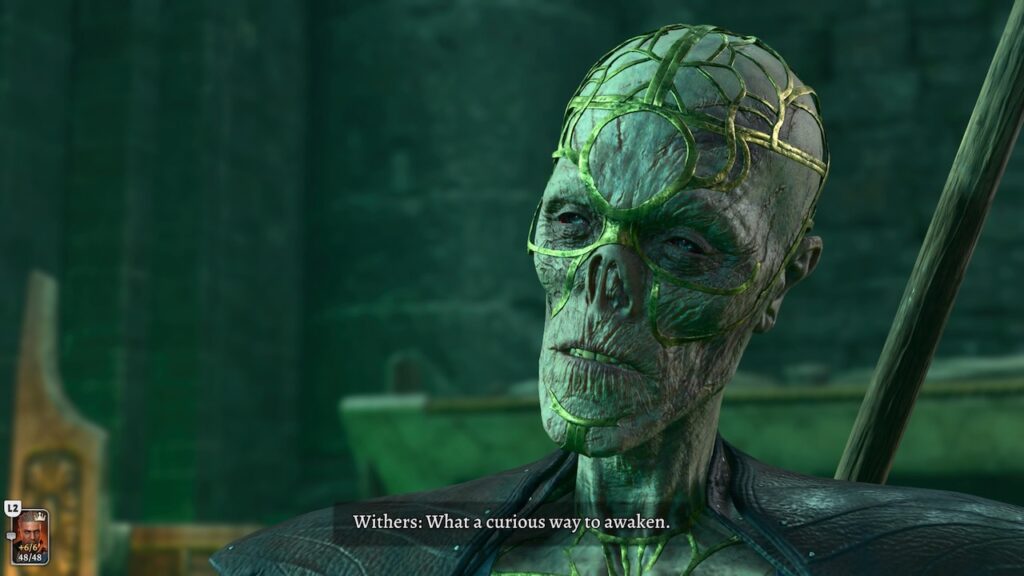
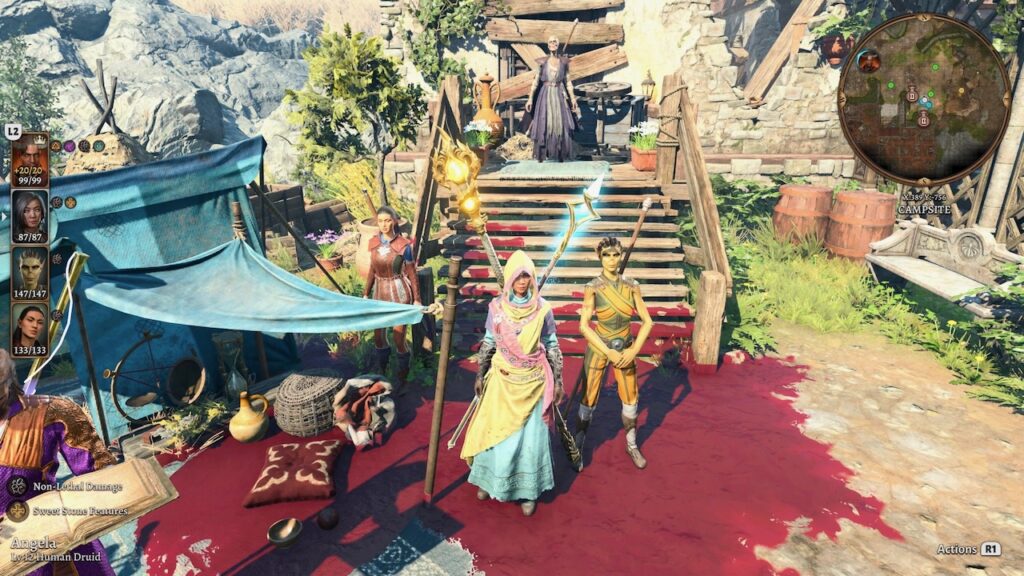
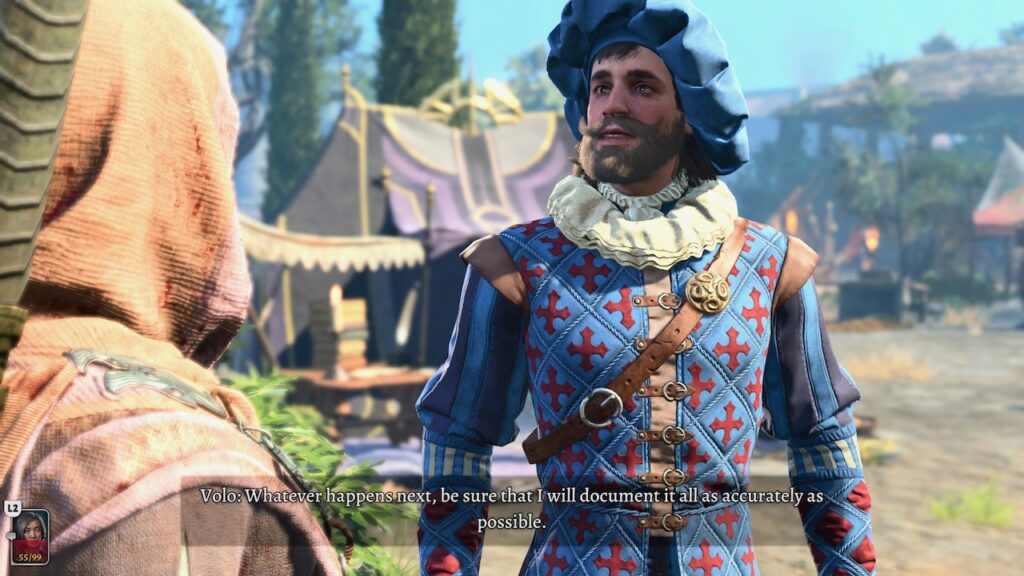
Darn it, I lied to you again. Keep scrolling if you want to skip the tangent!
A major element of the camp sites that the game’s story can advance there. If you’ve destroyed the Altar of the Elder God, the Elder God might show up to express their displeasure. You can have conversations with your party members. Some of those conversations can lead to romance.

OK, forget the warning. Just read the rest of this tangent and roll your eyes in affirmation.
While it might seem you can do a Long Rest pretty much whenever you’d like, there are some limits:
- Every time you do a full Long Rest, it costs some Camp Supplies. These Supplies are easy to find (at least in Explorer and Balanced difficulty), but not infinite. (You can do “Partial Rests” by spending fewer than the quota of Camp Supplies, but I’ve never done so.)
- There’s one important resource that only lasts until the next Long Rest: Elixirs. There are a wide variety of Elixirs in BG3, ranging from the relatively useless Elixir of Barkskin to the critically important Elixir of Bloodlust. While the effects of an Elixir don’t go away until the next Long Rest, you may want to hold off on that Rest for as long as you can if you don’t have another bottle of that Elixir to use the next day.
- Depending on your game strategy, it may take a while to set up your party after a Long Rest. In my case, my set-up procedure was time-consuming: summoning minions, having hirelings cast buffs on characters and minions, using items like Drakethroat Glaive to enhance weapons. Because I’m a cautious and unskilled player, setting up for the day might take me 15 minutes of real time. I’m not going to do all that to adventure for only 10 minutes then take another Long Rest to recover spell slots.
OK, now we can officially end the tangent.
Clerics as Healers
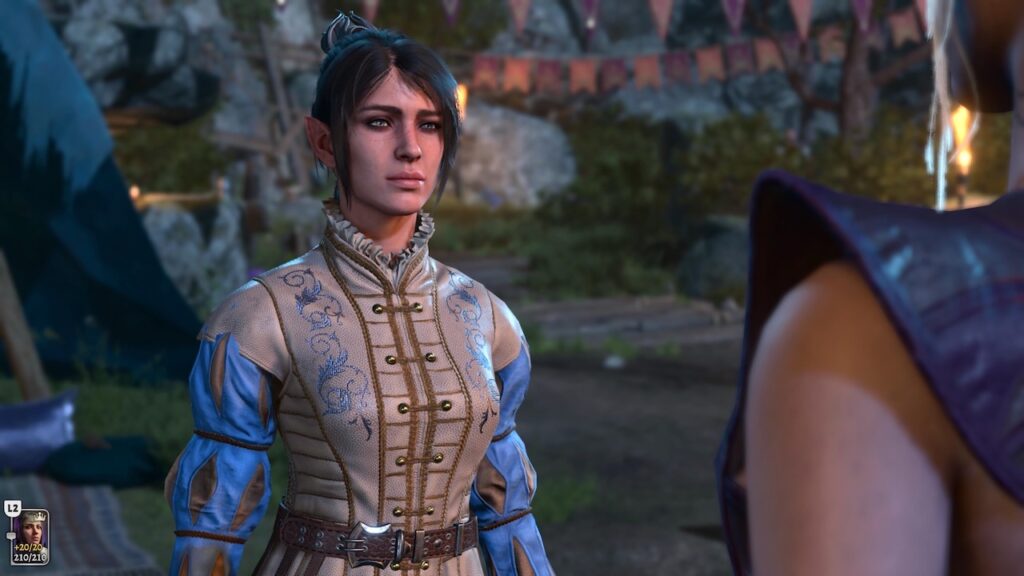
The reasons why Clerics are not usually not needed as healers in BG3:
- Short Rests are simple and take no time. At higher difficulty levels you might not get all your hit points back, but at Explorer or Balanced Difficulty you typically get them fully restored.
- Healing potions are plentiful. You can find them as loot, and they don’t cost much to purchase from merchants.
- If you need healing in the middle of combat, you can drink a healing potion at the cost of a Bonus Action.
- On the rare occasions you might need an emergency heal from another character, the “bread-and-butter” healing spell is Healing Word, which costs a Bonus Action. While Clerics can cast this spell, so can Druids and Bards.
- There’s the trick I only learned in playthrough 7, and actually started doing in this playthrough: If you need someone else to spend an Action to heal you, they can throw a healing potion on you. If you only want to spend a Bonus Action, place the healing potion on the ground next to the target (which takes no action), then use an off-hand weapon as a Bonus Action to shatter the bottle.
With all these options, in BG3 healing is the least important benefit that a Cleric brings to the party. Of course, there are exceptions; Mass Healing Word can be a lifesaver for an entire party. But all things considered, I wouldn’t level up a Cleric solely to have access to that spell.
So I wouldn’t keep Shadowheart around as a healer. I’d keep her for her sense of humor.
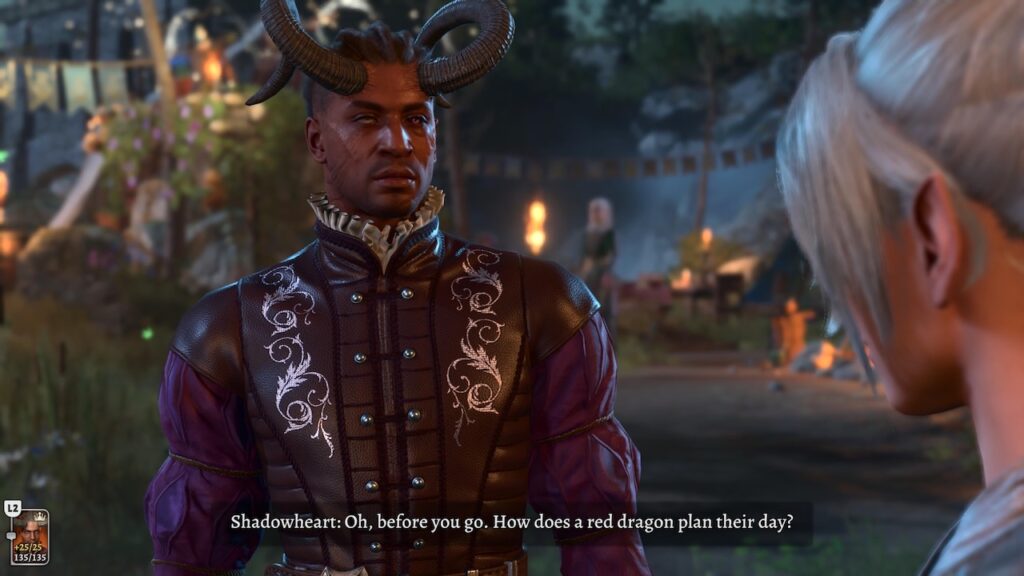
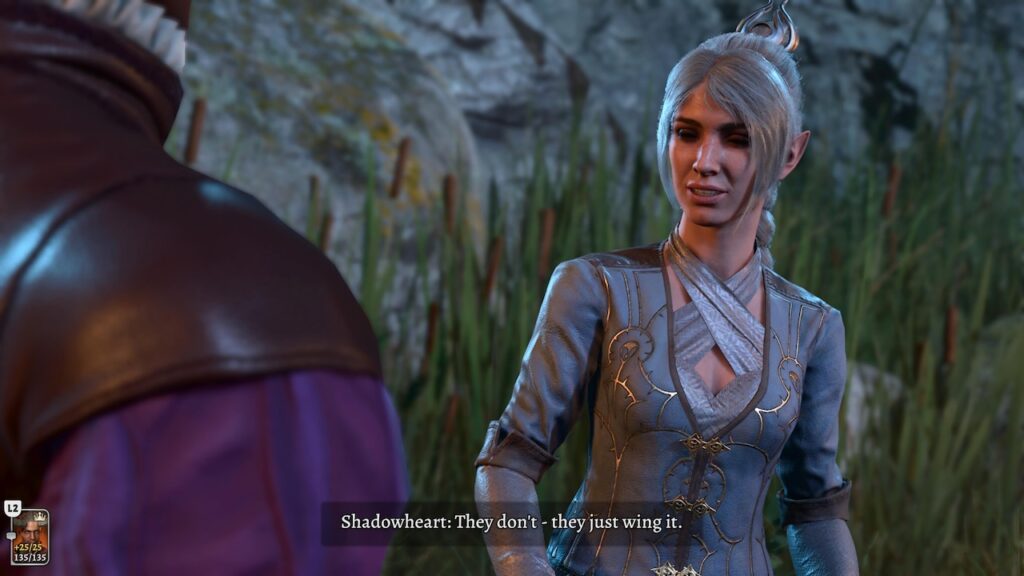
Or maybe not.
Karlach
My goal was to play Karlach as an Open-Hand Monk. I generally followed the recipe in this video:
She was magnificent. “Oh, did I defeat that Dragon? I didn’t notice. I waved my hands around and whatever-it-was evaporated.”
Was Karlach more powerful as an OH Monk than Lae’zel was in playthrough 4? I can’t say. I didn’t maintain hard statistics for either character.
It was Karlach’s performance that, in part, led me to switch from Explorer difficulty (the easiest) to Balanced (next level up) roughly in the middle of game.
Yet I didn’t keep Karlach to the end of the playthrough. I’ll get to that later.
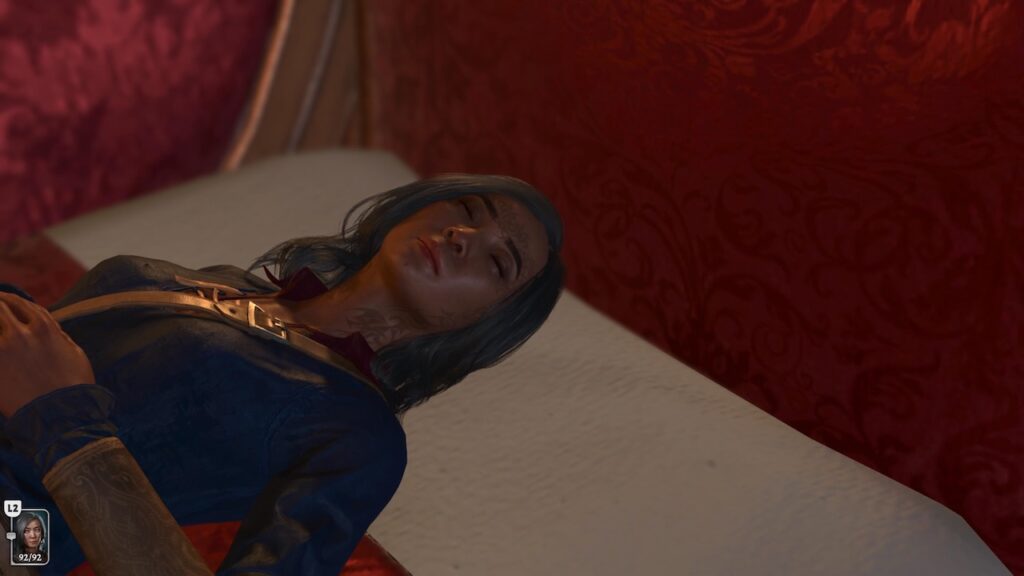
Let’s switch to another Karlach-related goal: The romance. Thanks to previous playthroughs, I knew what to do.

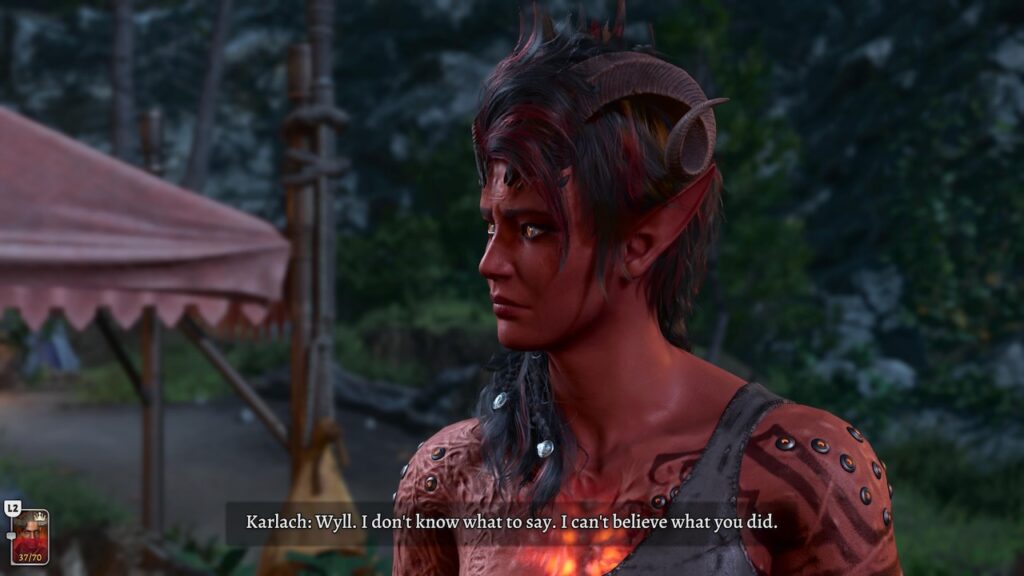
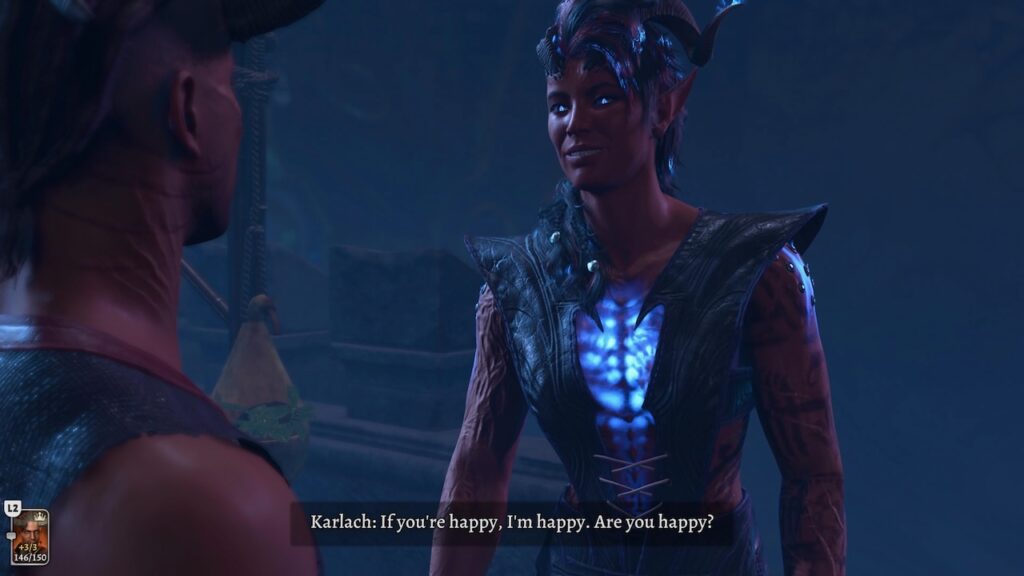
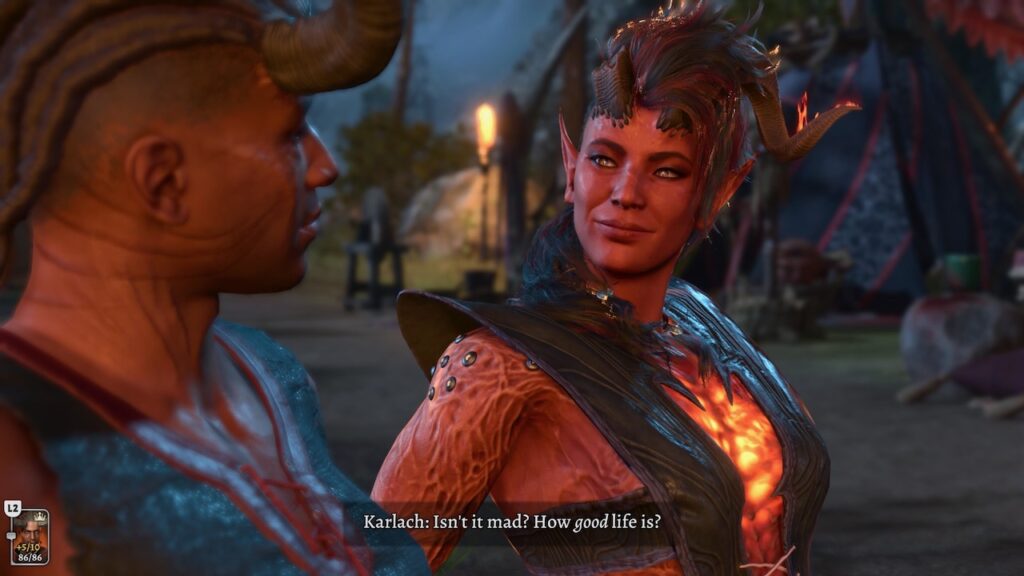
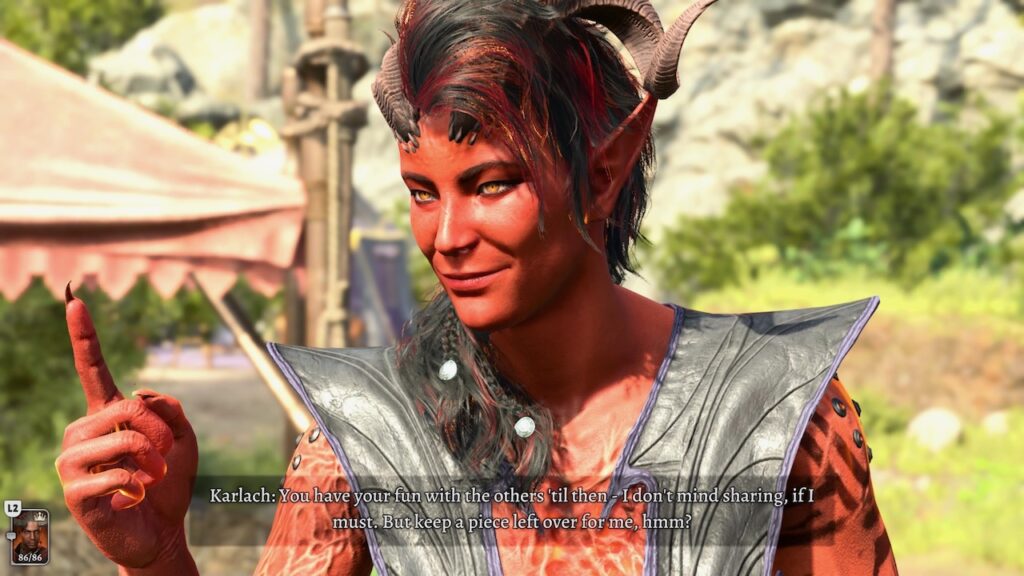
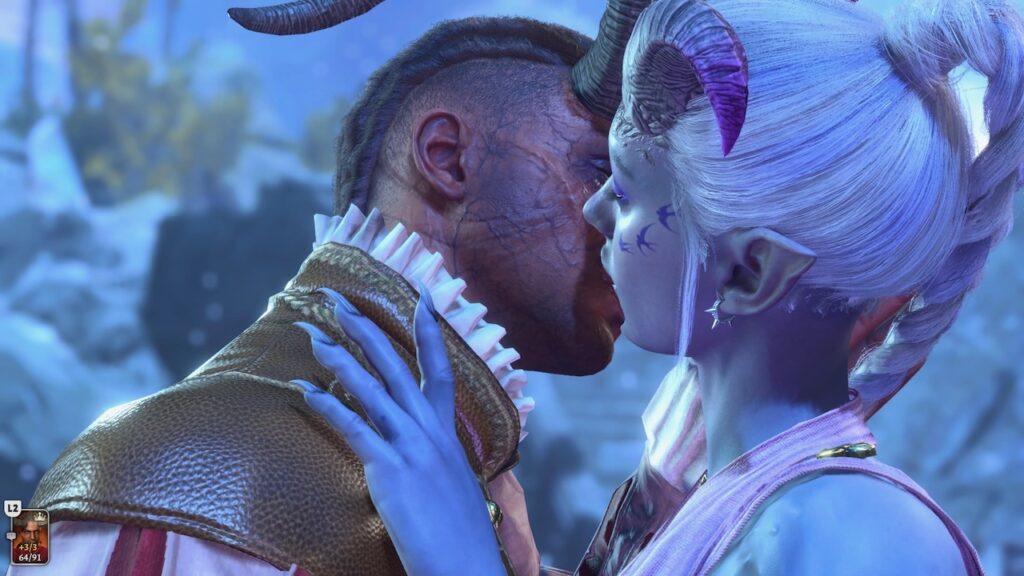
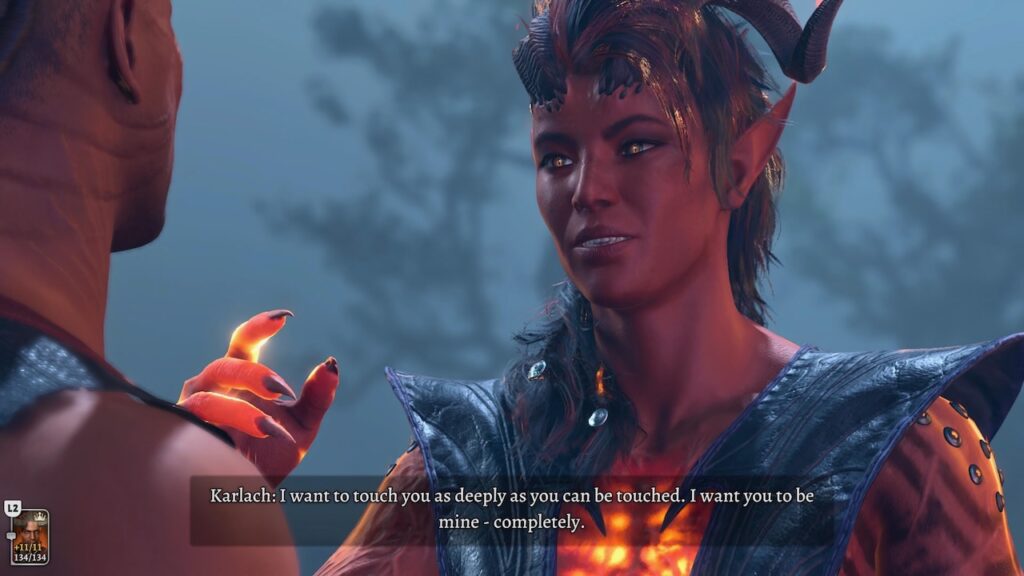
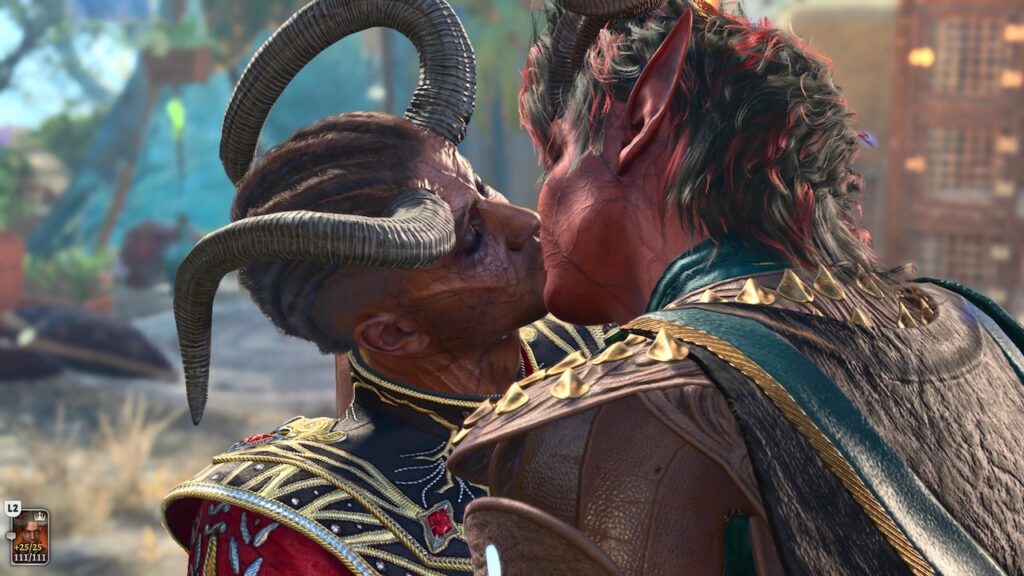
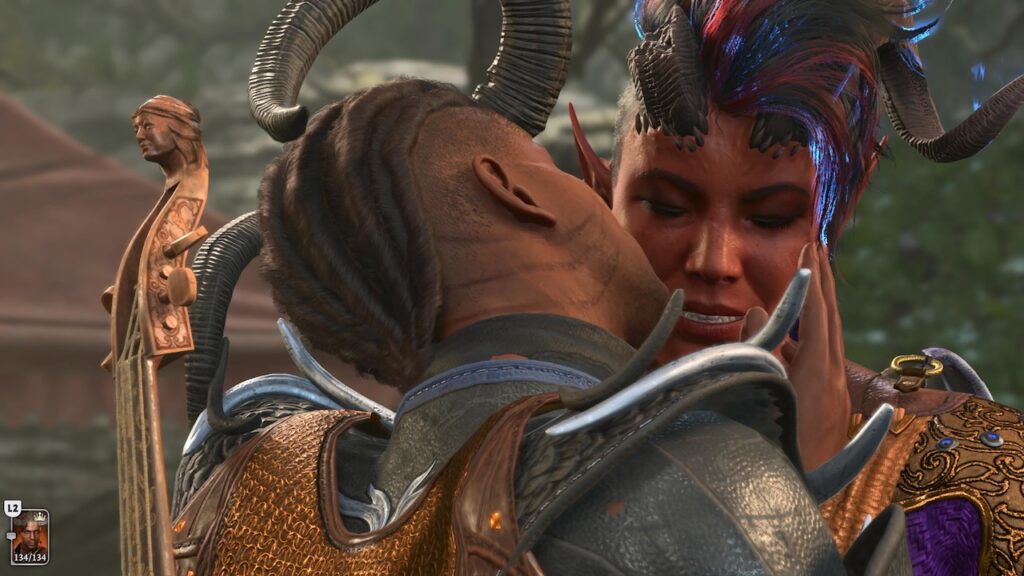


Minthara approaches her romances with a fierce intensity. Lae’zel is tentative; she’s put up powerful insulation against emotional contact. Karlach approaches her romance with anticipation and joy. The optimistic screenshots of her that I have in this posts are only a sample of what she’ll say if you pursue a connection with her.
What I said about relationships also applies to kissing. Again, the motion-capture folks at Larian paid attention to what it was like for Karlach to kiss. I mentioned in playthrough 2 how Larian had sculpted the kissing interactions between characters of different heights. In this playthrough, I became aware they compensated for characters with horns; the characters lip-lock but they don’t horn-lock.
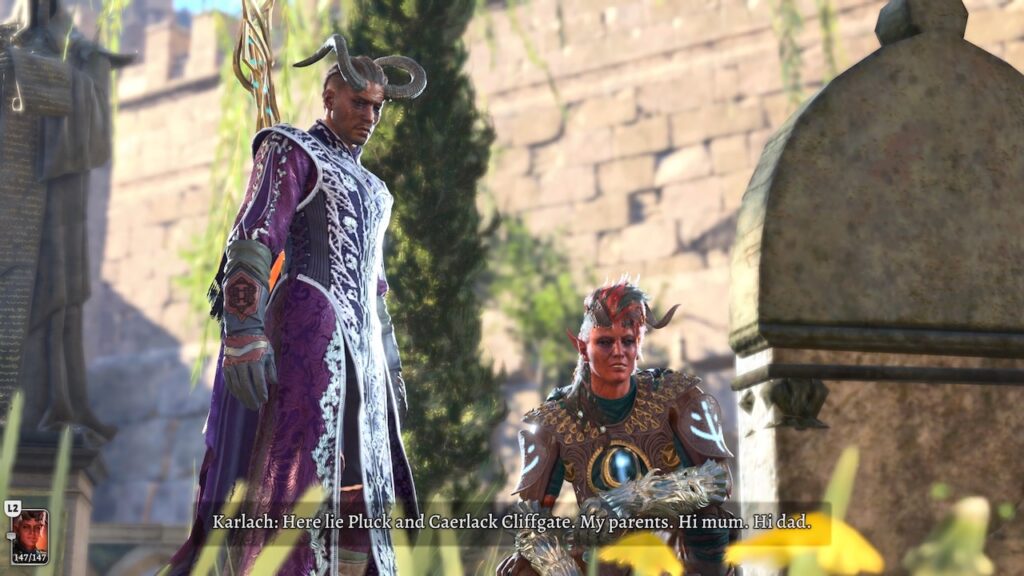
The only mildly disappointing aspect of the Wyll-Karlach romance is that there was no special mention of their initial attitude towards one another when they first met. If they had to re-write Wyll, especially in Act 1, I understand the omission. At some point there are only so many storylines you can acknowledge and get the game released on-time.
Once it became clear that Karlach and Wyll were an item, the other characters made some comments.
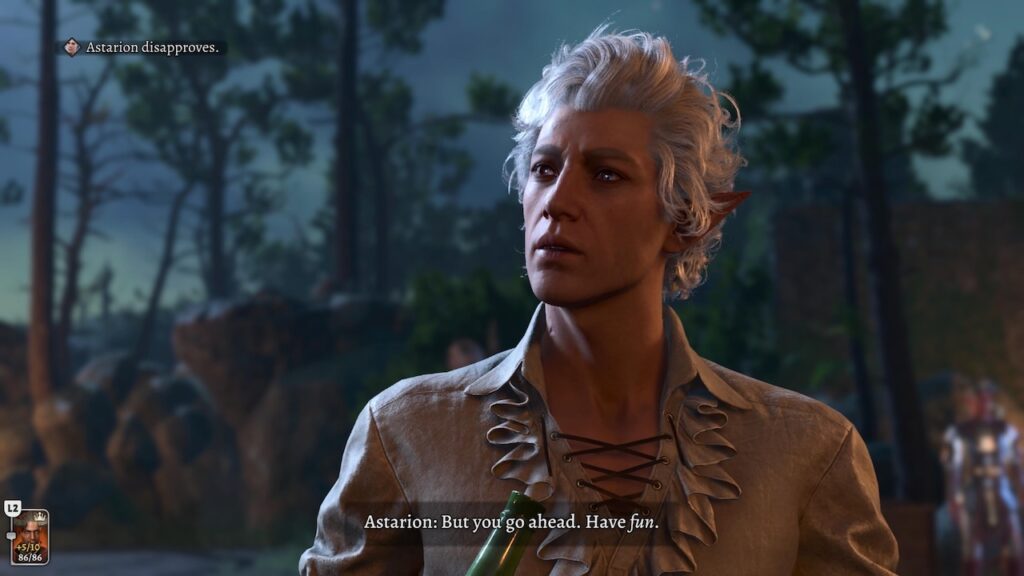
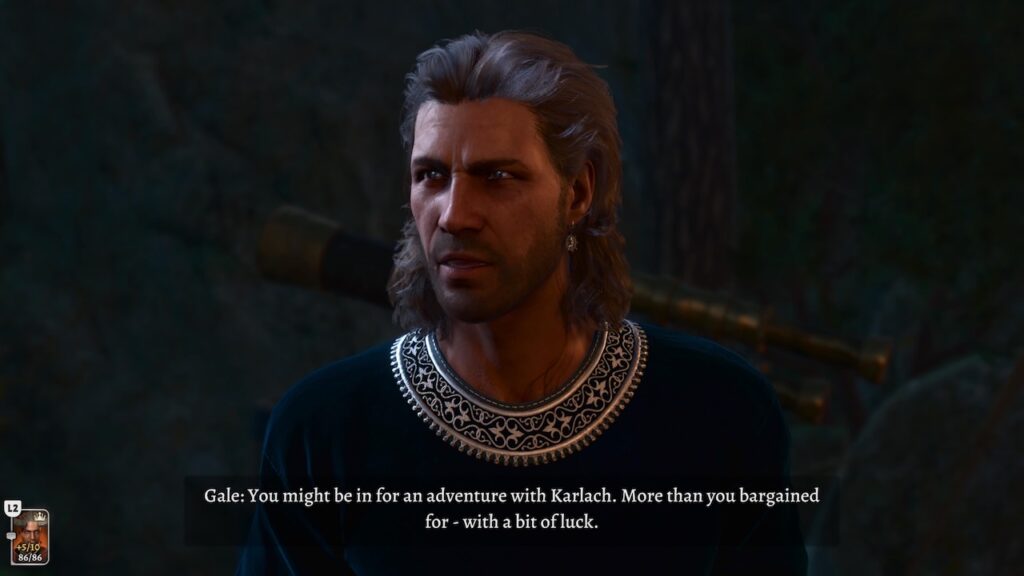
Lae’zel got in two comments.

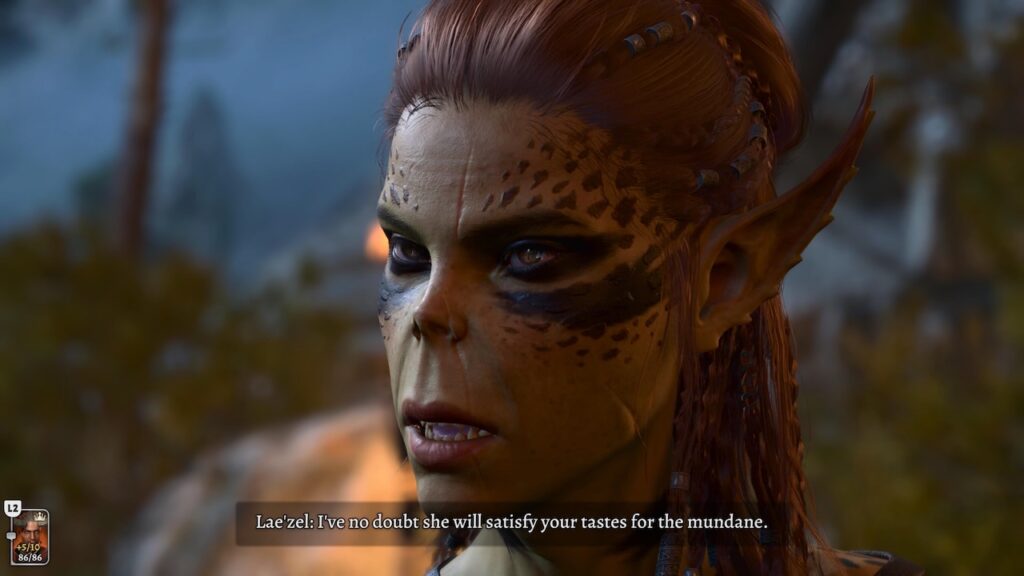
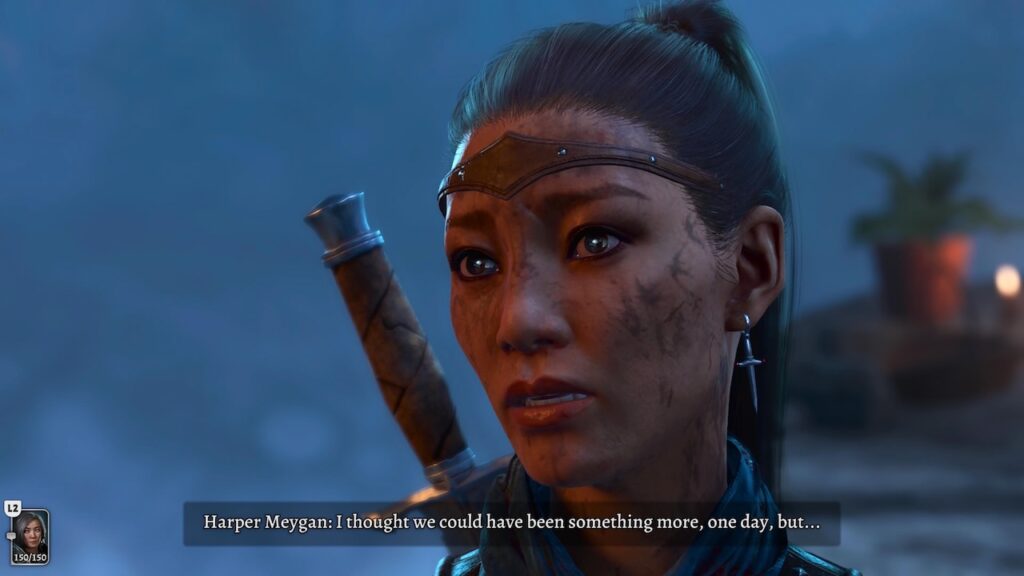
The problem with everyone sharing the same campsite is that there isn’t much privacy.
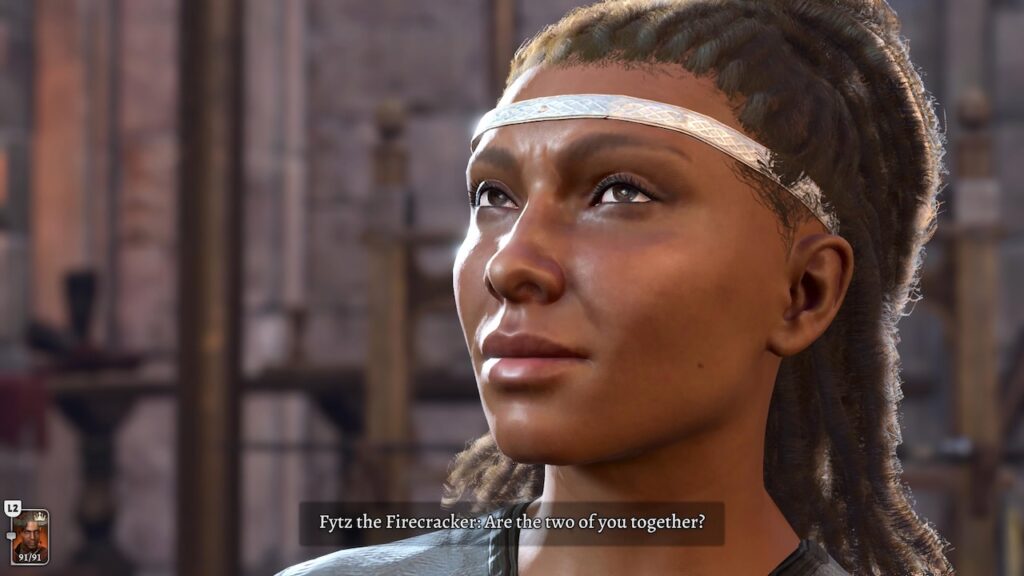
Lae’zel
The goal was to make Lae’zel half-Sorceror, half-Paladin; a “Sorcadin”. (You may notice that Toyhouze has similar overblown thumbnails for his videos, but his advice is decent.)
The result was: yeah, but…
Her damage output was good, and might have been comparable to Karlach’s if I simply gave Lae’zel 12 levels of Paladin. But if I wanted to play a pure Paladin, I would have used Minthara again as I did in playthrough 7.
Her Paladin skills did not synergize well with her Sorcerer abilities. It was more efficient to keep hitting with Divine Smite.
In the end, I only used her Sorcerer powers for Twinned Spell on the Drakethroat Glaive‘s Draconic Elemental Weapon spell, enchanting two weapons instead of one. After that, I left her at camp and used other characters.
Lae’zel had basically become one of the Protectors, and was part of the set-up process after a Long Rest. That was it.
There’s probably something I missed. I know from playthrough 6 that Sorcerer alone is a powerful class, and as I noted above I know how to play a “pure” Paladin. But the combination eludes me.
Sorry, Lae’zel. Perhaps we’ll have better luck next time.
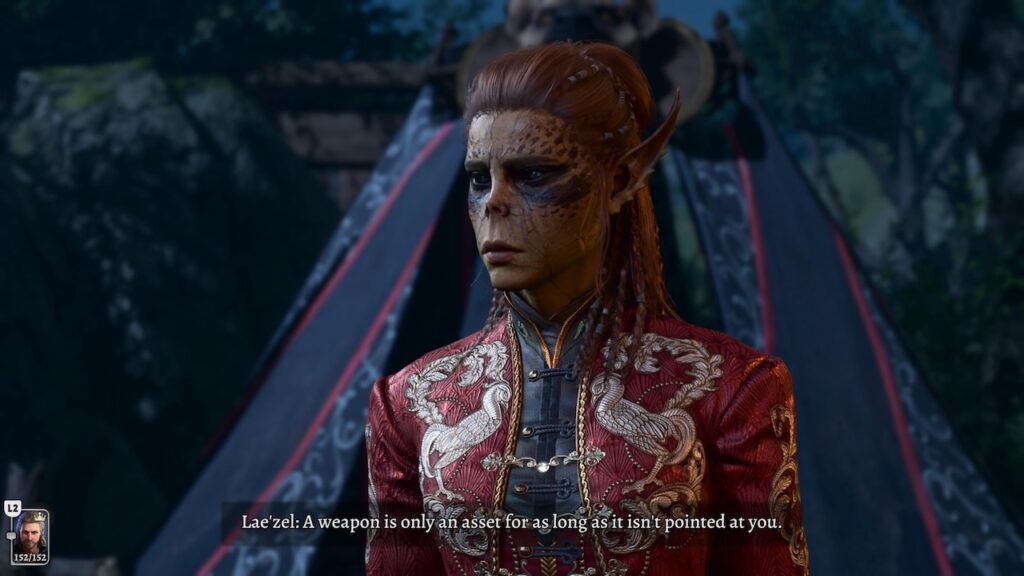
I didn’t keep Lae’zel as an active party member through the end of the playthrough either. I could simply have respecced her as a full Paladin (or even as a full Sorcerer), but events moved in a different direction.
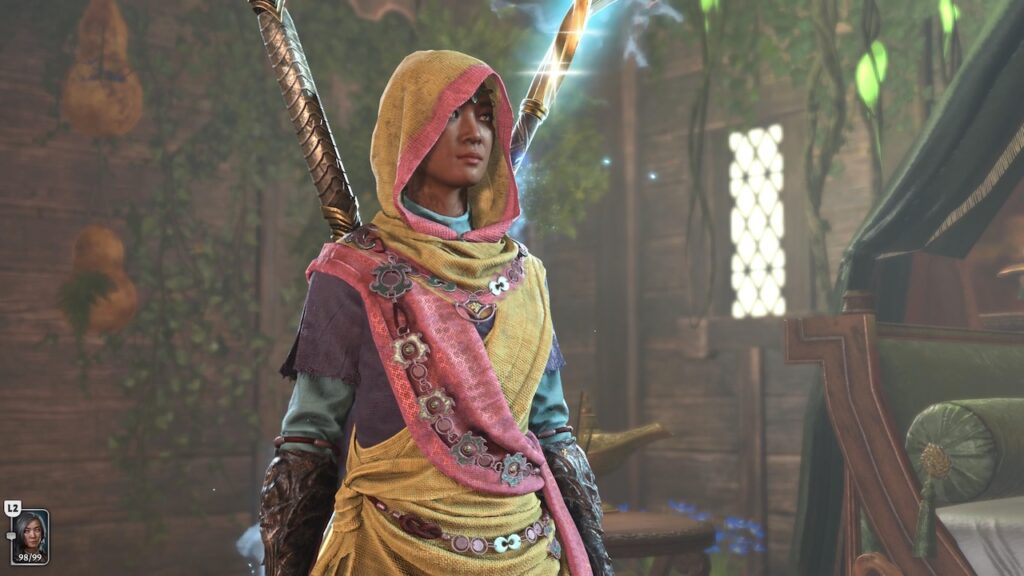
Scratch
In reviewing the characters I’ve mentioned so far in this post, I realize that, apart from Wyll, everyone I’ve mentioned did not remain in the party through the end of the game.
There’s one more character that didn’t make it.
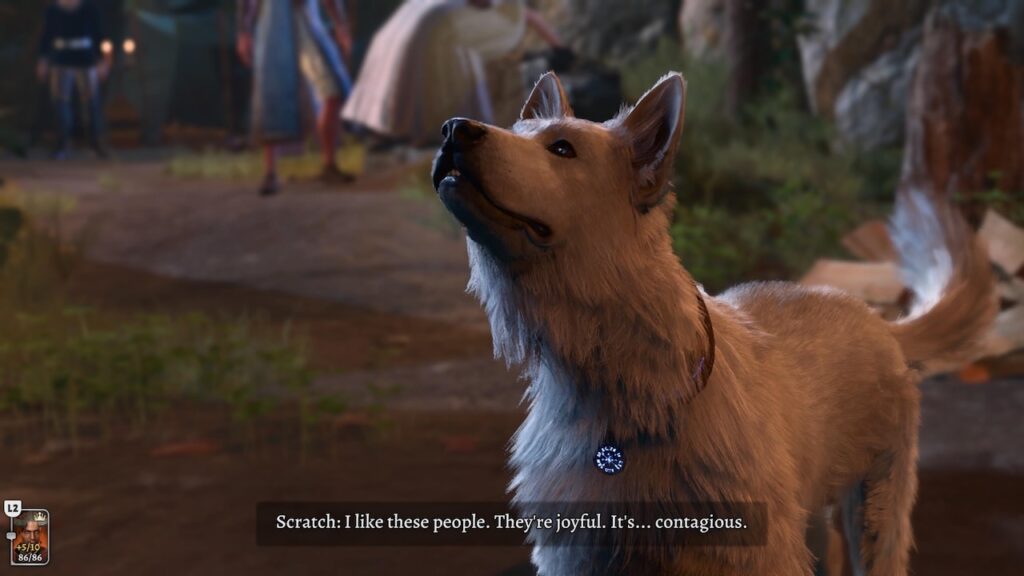
In the game, if you make a series of correct decisions, you will acquire an animal companion: Scratch. He’s part of a category of animals called Familiars. All familiars have very few hit points, so unless you’re careful they won’t last long in combat. However, each Familiar has a unique ability that can be quite useful if managed properly.
Scratch doesn’t have just one special ability, he has three:
- He automatically succeeds on Survival checks. This means he can find hidden treasures better than anyone else. You know he’s on the trail of something special when you see the words Scratch’s Sniff above his head. He has a tendency to rush forward into a trap and set it off in his eagerness to help you.
- If you throw something, he will rush forward, pick it up, and bring it to you. This is sweet if you throw a toy or a bone. It can be handy if you’ve thrown a dagger at an enemy; you won’t have to pick it up. It can be a problem if you’ve just thrown a grenade.
- He is the only Familiar that can perform the Help action (apart from a Level 7 Beast Master Ranger’s Companion). If a character is in dire straits, Scratch could come in and Help them recover. They’d be ready for their next turn. While any character can do the same thing, it takes an Action. Scratch’s presence could save two Actions among the party: one from the character who needs help to recover, and one from the other character who’d have to help them.
You see why he was such a good boy!
Like any Familiar, if Scratch was killed while out an adventure, he could be resummoned after a Short Rest. While he was fragile, there was little downside to having him along. You can see him in a couple of pictures in my first BG3 post.
When the party returned to a campsite, Scratch was always there. He couldn’t be controlled by a player, so he ran around and had fun. You could speak with him (always get Speak With Animals if you can!), play fetch with him, or pet him.
If he could always be resummoned, how did he die?
Knowing how good a boy he was, you can guess the answer: He died defending me.
Normally, a campsite is safe. However, there are occasions when an enemy can come in. When that happens, while you have control over your character, all the other characters (including pets, familiars, companions, summoned creatures) will race in to attack the intruder. This includes Scratch.
This happened in one of my campsite visits. We settled the enemy quickly enough. But the enemy gave off one burst of an area-of-effect spell. Scratch, who had rushed to bite the enemy and had few hit points, was killed instantly.
I didn’t notice at first. Then I thought he’d just appear after a Rest, or after I summoned him during an adventure. I didn’t give the matter much thought.
It wasn’t until it became impossible to restore him from a game save that I learned: If Scratch dies while in camp, that’s it. He won’t come back.
After he’s gone, if a character throws Scratch’s Ball, they say one of four different lines about how much they miss Scratch. Each character’s lines are different.
Before this, I respected the talents of Neil Newbon, the voice and motion actor for Astarion. But when I heard how he expressed his feelings over the loss of Scratch, I felt that he was the greatest voice actor in the world.
Scratch, we all miss you.
Who made it?
If Shadowheart, Karlach, Lae’zel, and Scratch didn’t stay in the party through to the end of the game, who did?
This post is long enough. I’ve decided to save those stories for a subsequent essay.
Here’s a clue:

Plus in the next BG3 essay: What I learned about the game from playthrough 8.
Character gear
There are folks out there who are far more skilled than I am at assembling effective gear for various builds. However, for my own future notes, I’m going to include the stats and gear for those characters that made it to the end of the playthrough.
After I’ve introduced those characters, of course.
Wyll
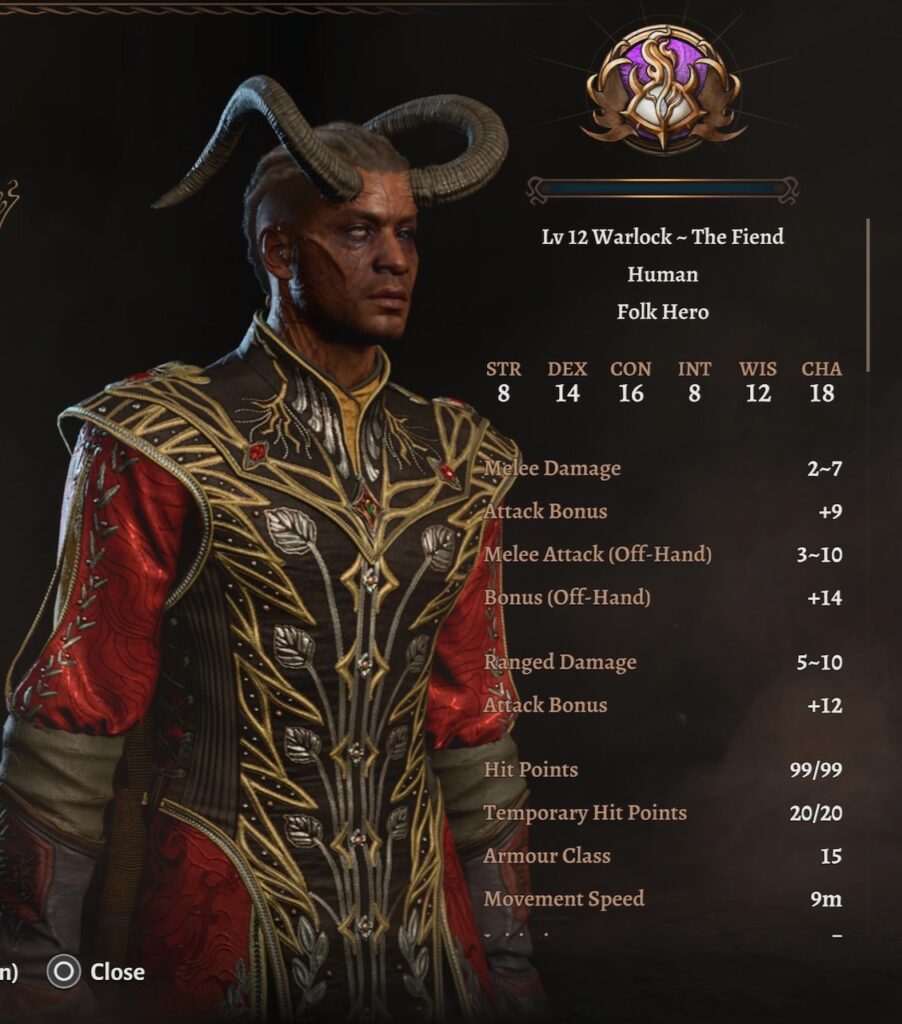
STR 8, DEX 14, CON 16, INT 8, WIS 12, CHA 18 (+2 from Birthright)
Leveled 12 levels of Fiend Warlock, Pact of the Blade
Feats: Dual Wielder, Alert, Spell Sniper
AC 15 (no scrolls of Mage Armor at the very end!)
Head:
Birthright
For a while it was Diadem of Arcane Synergy
Cloak:
Cloak of the Weave (+1 to Spell Save DC)
Armor:
Potent Robe
Boots:
Boots of Genial Striding
Though I probably should have used Disintegrating Night Walkers
Gloves:
Spellmight Gloves
Rings:
Ring of Protection
Callous Glow Ring
Neck:
Amulet of Greater Health
For a while I used Spineshudder Amulet; when I stopped using it, I should have given it with Thunderskin Cloak to another character. Or perhaps I should have kept that combination and given the Amulet to someone else.
Weapons:
Main hand: Staff of Spellpower for +1 to Spell Save DC
Off hand: Infernal Rapier for the +1 to Spell Save DC
For a while I used The SpellSparkler and Melf’s First Staff
Bow:
Darkfire Shortbow for the Haste
Notes:
If you’re experienced with BG3, you may easily question my choices. The biggest one will be: what about Markoheshkir? Another character had it; I’ll get into why in a subsequent essay.
Why the Dual Wielder Feat? A persistent issue I’ve reported before is that I like to have my spellcaster able to hold two staffs at once. I also like them to have something to do with their bonus action, even if it’s to swing feebly at an enemy. That’s also why I went with Pact of the Blade for my off-hand weapon.
It was strange to end the game without any character wielding Knife of the Undermountain King, but I didn’t want to sacrifice +1 Spell Save DC for +1 change to Crit. Although since Eldritch Blast is an Attack Spell, perhaps that would have been better than Infernal Rapier.
Pingback: Baldur’s Gate 3 – Playthrough 8 – Those who made it – The Argothald Journal
Pingback: BG3 – Tales of the Hero Hireling – The Trail of Evil – The Argothald Journal
Pingback: BG3 – Tales of the Hero Hireling – Recognition – The Argothald Journal
Pingback: Baldur’s Gate 3 – Playthrough 9 – Laurelin – The Argothald Journal
Pingback: Baldur’s Gate 3 – Playthrough 11 – Romancing a Wizard – The Argothald Journal
Pingback: BG3 – Barding it – The Argothald Journal
Pingback: BG3 – Tales of the Hero Hireling – Go to Hell – The Argothald Journal
Pingback: Baldur’s Gate 3 – Playthrough 12 – More Relationships – The Argothald Journal
Pingback: Baldur’s Gate 3 – Playthrough 12 – Wrapping it up – The Argothald Journal
Pingback: BG3 – Pickpocketing – The Argothald Journal
Pingback: Baldur’s Gate 3 – Playthrough 13 – Wicked – Evil – The Argothald Journal
Pingback: Baldur’s Gate 3 – Playthrough 13 – Wicked – Evil – The Argothald Journal
Pingback: Baldur’s Gate 3 – Playthrough 1/14 – Hugs and Doggies – The Argothald Journal
Pingback: Baldur’s Gate 3 – Playthrough 1/14 – Fey and Bellandria – The Argothald Journal
Pingback: Baldur’s Gate 3 – Playthrough 2/14.5 – Raelia and Tavelle – The Argothald Journal
Pingback: BG3 – Summoned creatures, throwing potions, and consoles – The Argothald Journal
Pingback: Baldur’s Gate 3 – Playthrough 8’/2.5 – Druid Angela and Mor’lith – The Argothald Journal
Pingback: BG3 – You too can play Arctic Druid Angela – The Argothald Journal
Pingback: BG3 – You can be Arctic Druid Angela too Five – The Argothald Journal
Pingback: BG3 – You can be Arctic Druid Angela too Seven – The Argothald Journal
Pingback: Baldur’s Gate 3 – Playthrough 3’ – Tav and Trophies – The Argothald Journal
Pingback: My BG3 and D&D rules explanations – The Argothald Journal